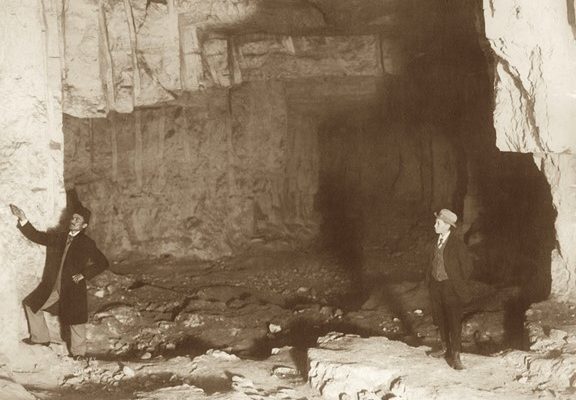文:Thomas Ole
翻譯:T.H. Cheng
Landscape 一詞,最初的含意,並不僅僅指那一層披覆在土地表面的網絡而已。它指的就是被塑造的土地本身,也包含了塑造這行為在內。
幾世紀以來,人們深掘壕溝、挖開運河,堆疊堤防、築起城牆,持續不懈地重塑腳下的土地,它得以成為承載這些活動的母體。
Landscape 遁入腳下的地面,深入表土、向下扎根,進入幽暗中咕嘟作響的地下水層,直抵岩石與地殼核心。然而這一層古老、接地氣的含意,在十七世紀後迷失了[註]。如今,我們都在迷失的陰影下感到混沌不明。一旦缺乏對腳下土地的深度認識,人們終將無視於眼前遼闊的未知大地。
因此,試著跪下,用手觸摸地表,然後奮力挖掘,直到筋疲力盡為止吧! 聞聞掌心土地的氣息,感受一切事物的根源。Landscape 就在那兒。
本文摘錄自 Go with Me. 50 Steps to Landscape Thinking. Thomas Ole 著(2014),經授權後轉載翻譯

註:由於當時西方風景畫的出現,Landscape 一詞開始和繪畫產生關聯,沾染視覺的含意,開始擁有更多層次的內涵。
Dig Down
ln its original meaning, ‘landscape’ was not a net draped over the surface of things. lt was a thing shaped from, and the act of shaping, the earth. It was the digging of ditches and canals, the mounding up of berms and walls, the shaping and reshaping of these things over centuries. The substrate was the matrix of this shaping. Landscape went deep beneath the feet into the topsoil, into the gurgling bubbling under that, then deeper still into rock and heat. This early, earthy side of landscape was all but lost in the seventeenth century, and we live in the shadow of that loss. For without knowing the world under your feet, you will never fully know the world before your eyes.
So: get down on your knees. Lay your hands on the ground, then start digging and do not stop until your hands are bloody. Then turn your palms upward and smell the landscape there. Feel the roots of things.
Thomas Oles, Go with Me. 50 Steps to Landscape Thinking. (2014)
當過除草工人,寫過學術論文,做過地景設計。
